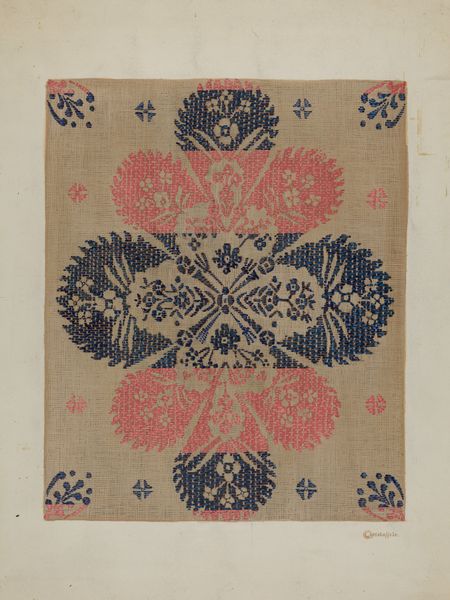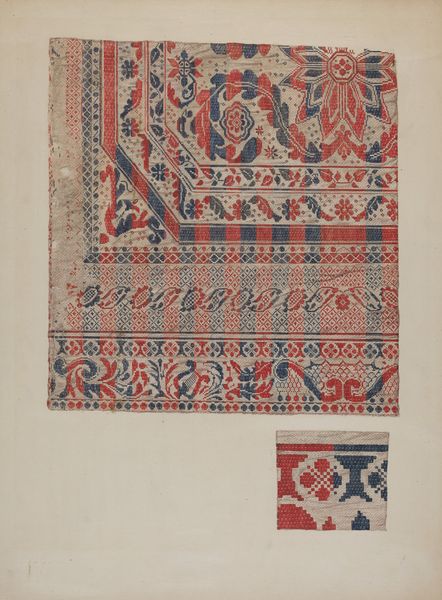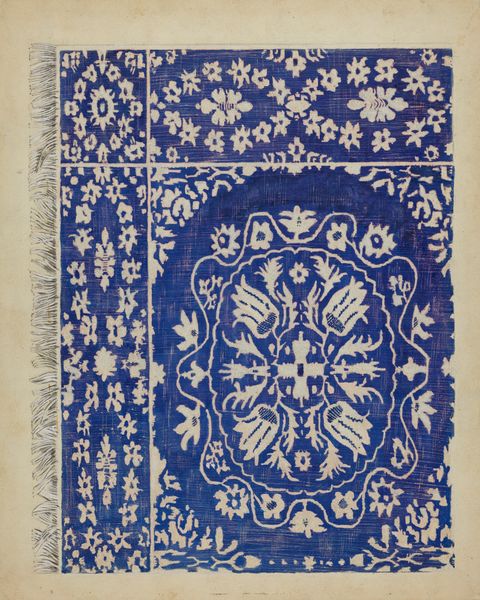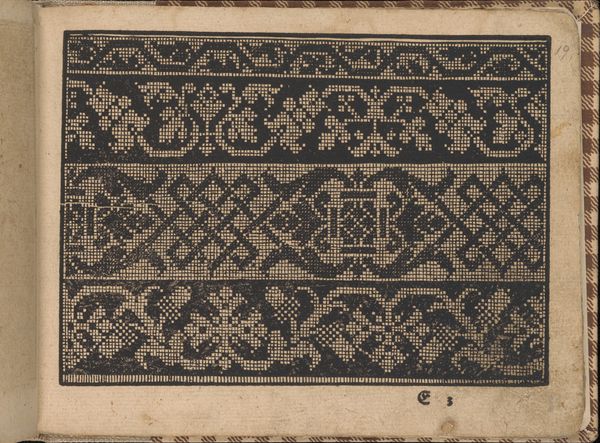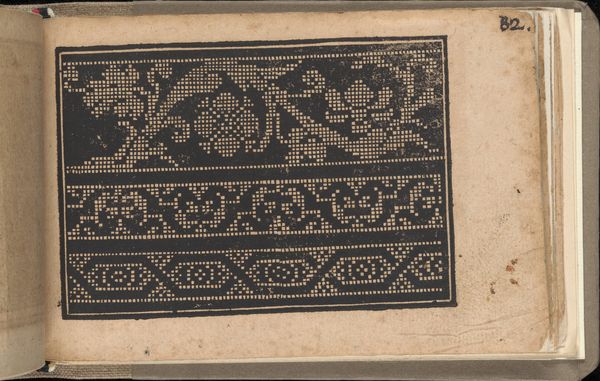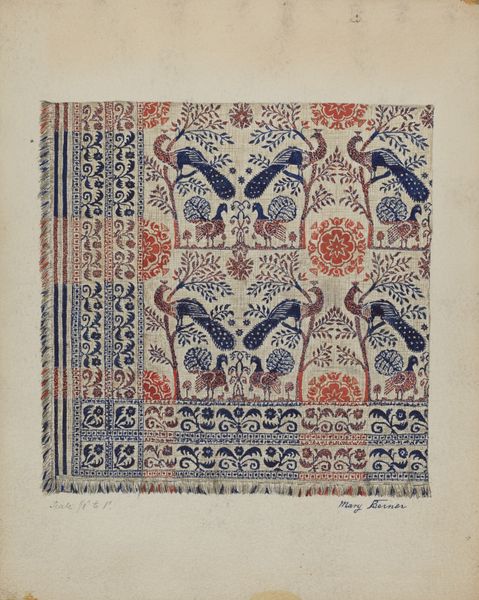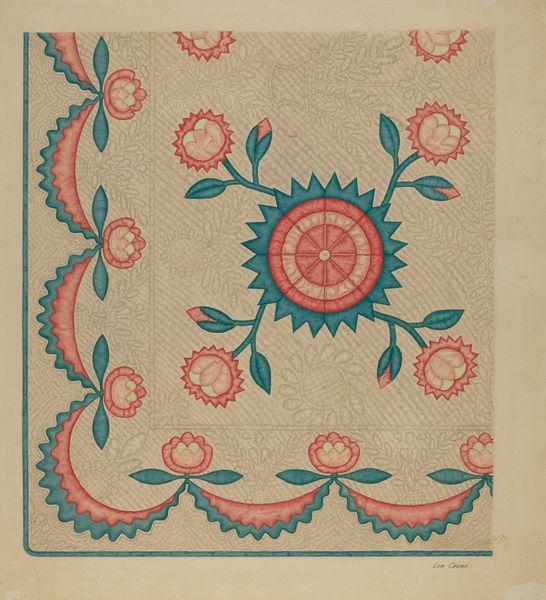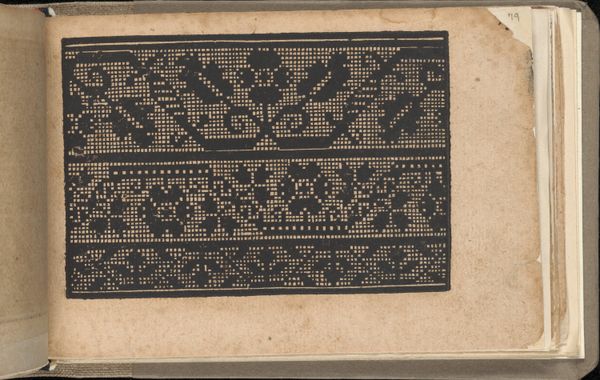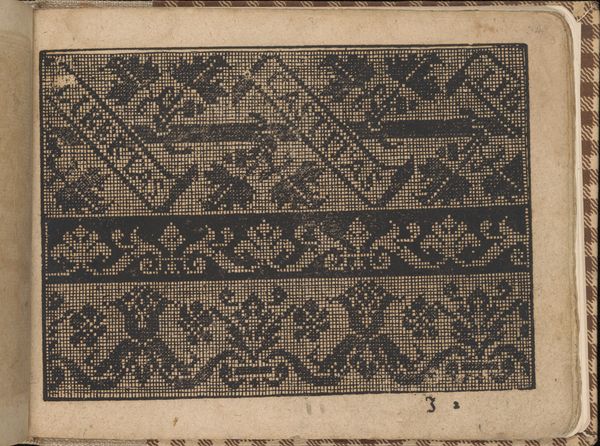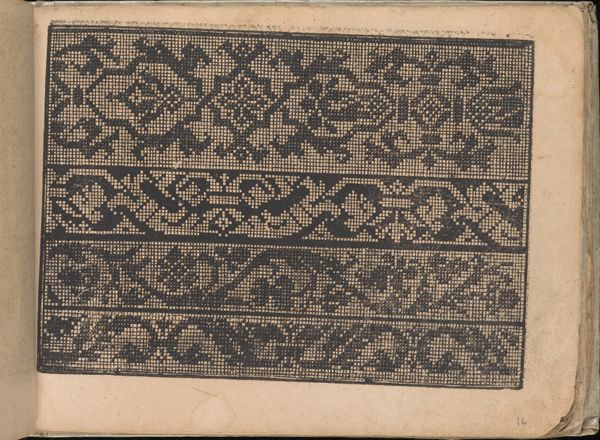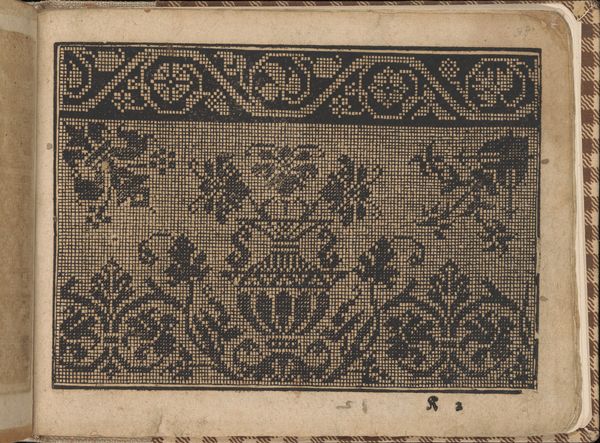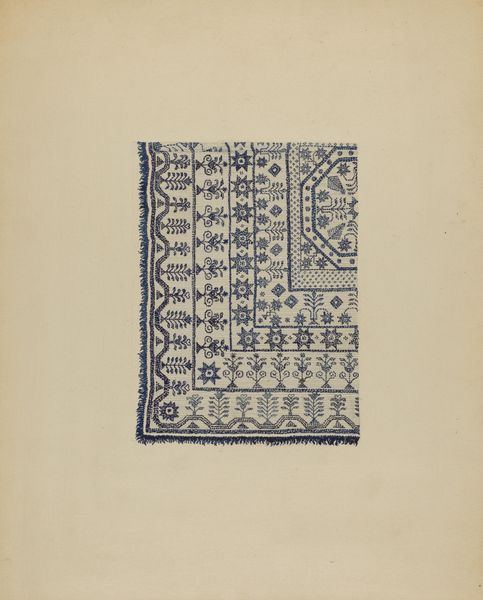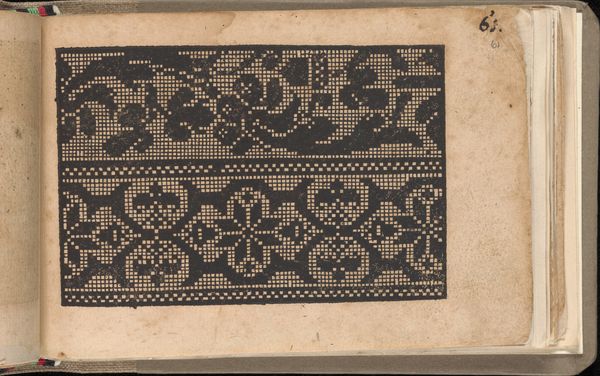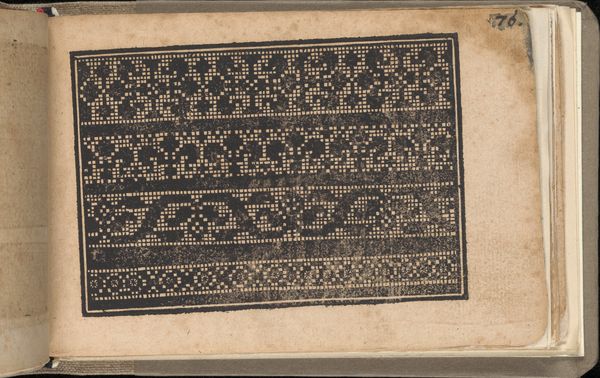
drawing, fibre-art, textile, watercolor
#
drawing
#
fibre-art
#
water colours
#
pattern
#
textile
#
watercolor
#
pattern repetition
#
decorative-art
Dimensions: overall: 26.7 x 35.7 cm (10 1/2 x 14 1/16 in.)
Copyright: National Gallery of Art: CC0 1.0
Editor: This watercolor drawing on textile, titled "Coverlet," is by Cornelius Christoffels, around 1940. I am drawn to the handmade quality of the design, especially the repetitive nature of the pattern. What aspects of its materiality strike you? Curator: The very fact that it's a watercolor rendering *of* a coverlet shifts our understanding. This isn't the coverlet itself, but a representation, likely a design for one. The materiality isn't just the textile, dye, and watercolor, but also the labor and intent behind the craft. It suggests a world where such designs were carefully planned. What can we learn from the artist's hand here, beyond the purely decorative? Editor: So, instead of admiring just the final textile, we should consider it as an image related to its own potential production. I guess that raises questions about its social context? Curator: Precisely! Think about who would have created this design and for what purpose. Was it for a commercial venture, or for personal use? The use of watercolor, traditionally considered "high art," to depict a "low art" craft like quilting challenges these hierarchies. Does this elevate the status of the craft or commodify the watercolor itself? Editor: That’s a really interesting tension. I hadn't considered the act of making a drawing *of* a coverlet as a form of commentary. It blurs the lines. Curator: And the repetition – is that celebrating mass production techniques? Is that what gives it "decorative art" status, to simply mark it as inferior, less valuable? Thinking about labor practices in textile production at this time—considerations about accessibility and class—adds another layer to understanding Christoffels' choices. Editor: This gives me so much to think about regarding what constitutes "art" and where value truly lies. Curator: Indeed, it compels us to question the very framework through which we view and assess objects, by focusing on production, circulation, and social impact.
Comments
No comments
Be the first to comment and join the conversation on the ultimate creative platform.
